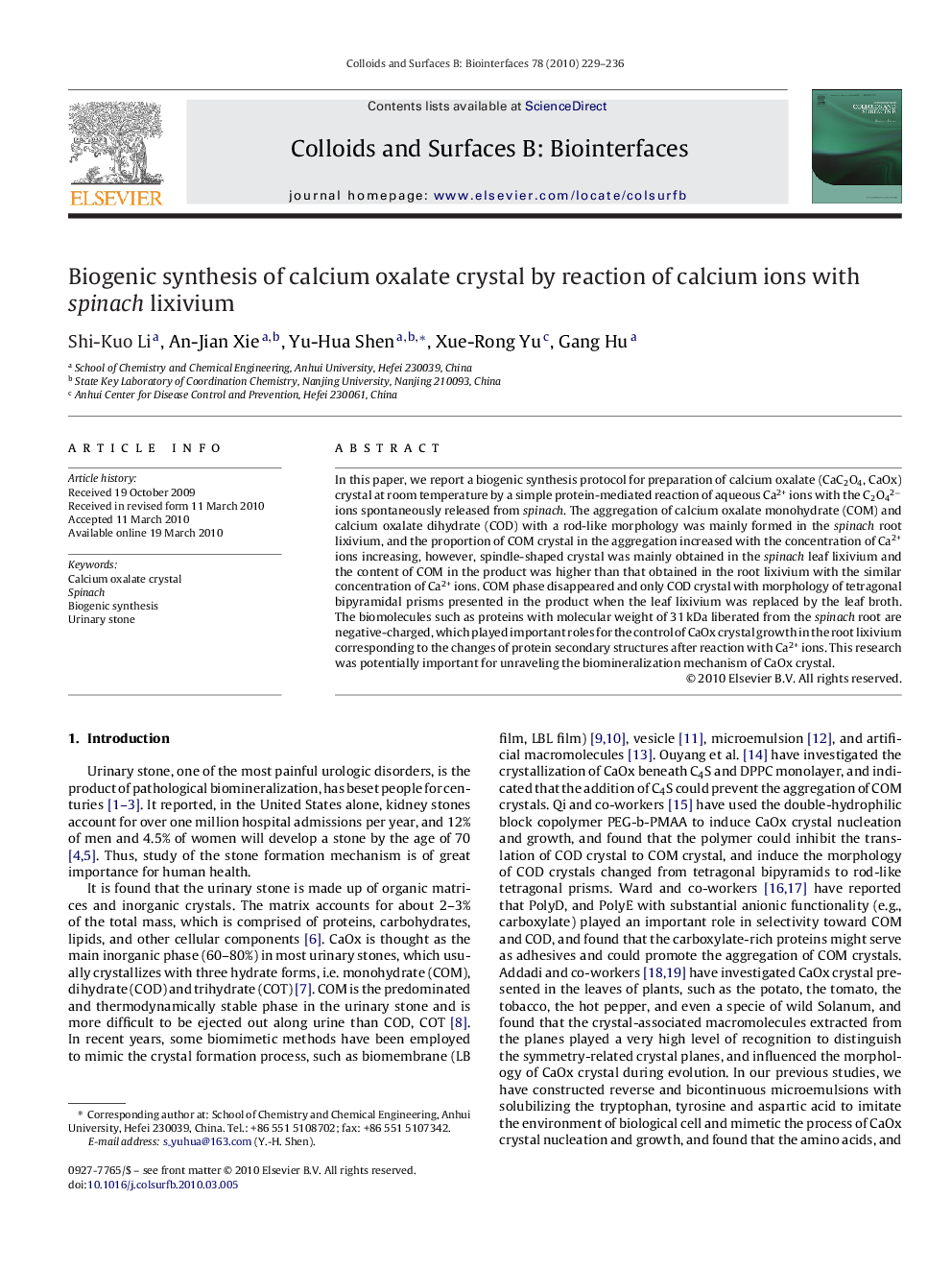| Article ID | Journal | Published Year | Pages | File Type |
|---|---|---|---|---|
| 601732 | Colloids and Surfaces B: Biointerfaces | 2010 | 8 Pages |
In this paper, we report a biogenic synthesis protocol for preparation of calcium oxalate (CaC2O4, CaOx) crystal at room temperature by a simple protein-mediated reaction of aqueous Ca2+ ions with the C2O42− ions spontaneously released from spinach. The aggregation of calcium oxalate monohydrate (COM) and calcium oxalate dihydrate (COD) with a rod-like morphology was mainly formed in the spinach root lixivium, and the proportion of COM crystal in the aggregation increased with the concentration of Ca2+ ions increasing, however, spindle-shaped crystal was mainly obtained in the spinach leaf lixivium and the content of COM in the product was higher than that obtained in the root lixivium with the similar concentration of Ca2+ ions. COM phase disappeared and only COD crystal with morphology of tetragonal bipyramidal prisms presented in the product when the leaf lixivium was replaced by the leaf broth. The biomolecules such as proteins with molecular weight of 31 kDa liberated from the spinach root are negative-charged, which played important roles for the control of CaOx crystal growth in the root lixivium corresponding to the changes of protein secondary structures after reaction with Ca2+ ions. This research was potentially important for unraveling the biomineralization mechanism of CaOx crystal.
